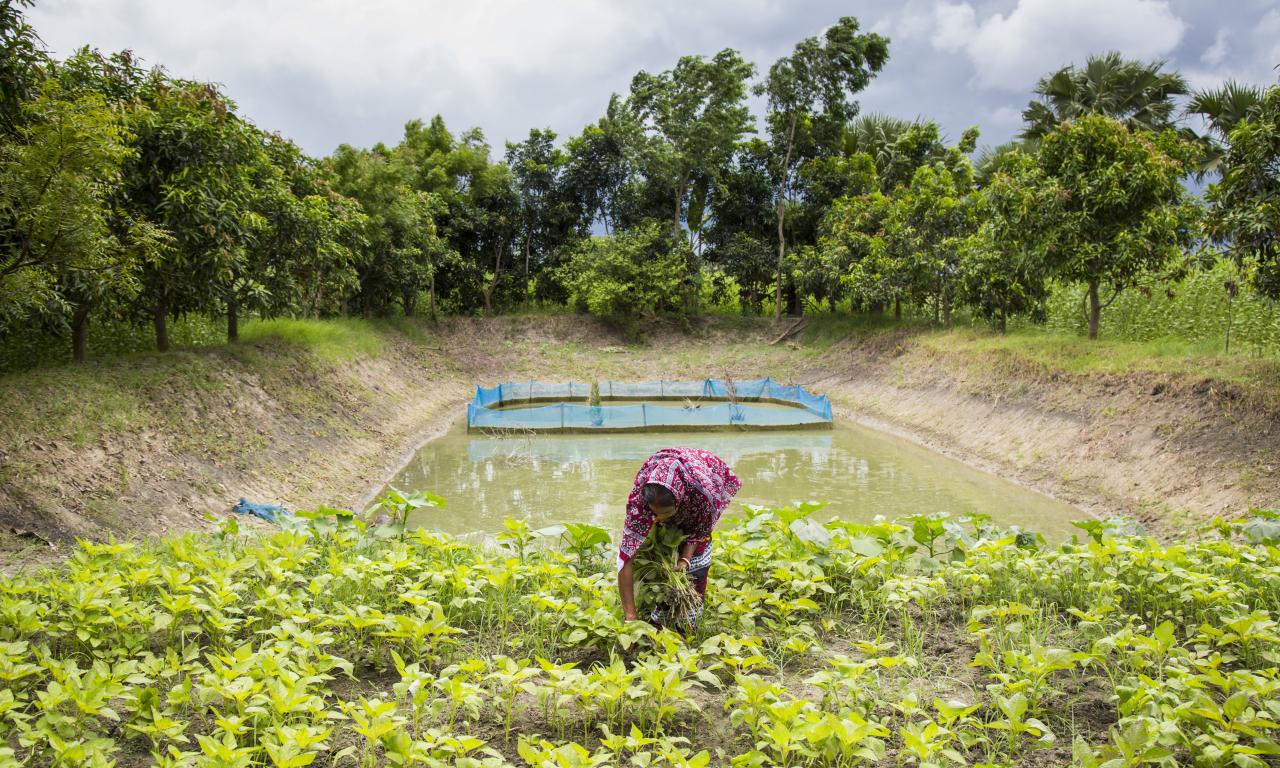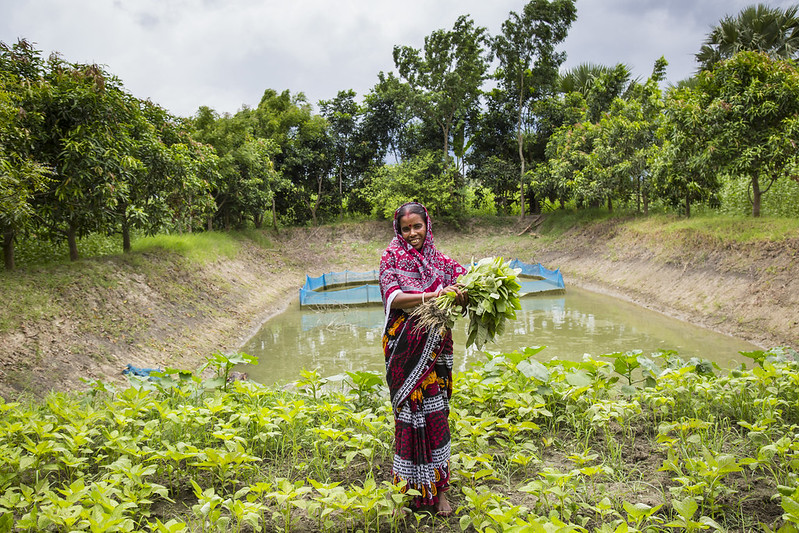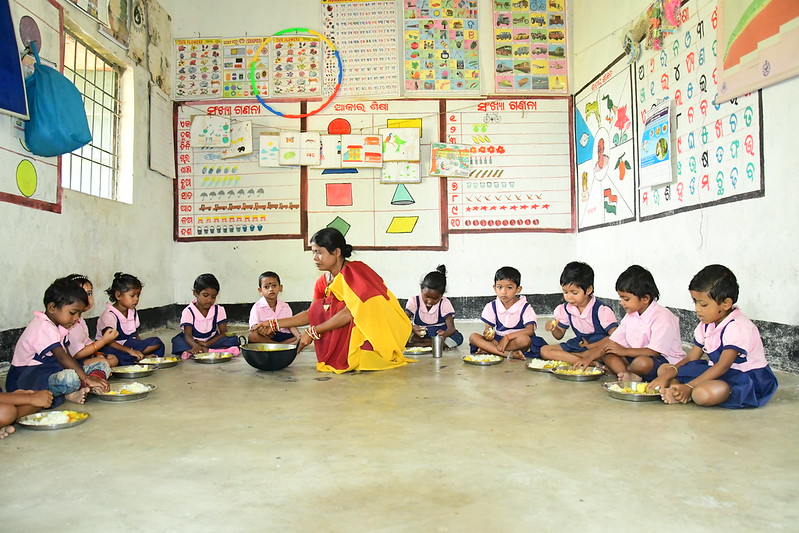
The 2021 World Food Prize Laureate shares her vision for locally-led opportunities for women and children in rural areas, urging the transformation of food systems from "feeding" to "nourishing" nations with small nutritious fish and aquatic foods.
The work of this year’s World Food Prize Laureate, Dr. Shakuntala Haraksingh Thilsted, sits at the “handshake” between food and health systems.
Her cutting edge research and insights into nutrition-sensitive approaches to aquaculture and food systems have expanded our thinking on how we produce, distribute, and consume foods to improve health and nutrition.
At USAID, where I am the chief nutritionist, we are poised to deliver on our UN Food Systems Summit commitments and drive more action nutrition in health and food systems at the Nutrition for Growth Summit in December. Our partnership with Dr. Thilsted and her ground-breaking research have been instrumental in informing our Feed the Future programs. I recently had the pleasure of sitting down for a “virtual” chat with Dr. Thilsted. Keep reading to learn more about her award-winning work.
Given last month’s UN Food Systems Summit and the increased focus on the role of food systems for nutrition, what are the major challenges for addressing the nutrient needs of infants, young children, and pregnant and lactating women?
I would start with how we design our nutrition programs. Traditionally, we start with a six-month-old baby and the foods that child is beginning to eat. But we’ve missed the most important time by failing to focus on the woman and her health and nutrition. When I worked in Bangladesh, I saw when working with local communities the needs of the mother were not valued until after the child was born and the woman was breastfeeding. The pregnant woman was in some ways invisible. We must prioritize the woman’s health and nutrition needs first for herself as a woman, then as an expectant mother. She must have foods that are nutritious and diverse. The good news is that we can do this, and aquatic foods are a key solution. Aquatic foods are superfoods — they are packed with essential micronutrients and essential fatty acids that are crucial for development. We know that we can provide fish, for example, as dried powder. The drying process concentrates the nutrient power of the fish and also provides a product for women’s and children’s diets that has a long-shelf life and can be conveniently added to foods such as porridge.

How have you, as a public health nutritionist, engaged with your agriculture and food security colleagues so that messages around the importance of nutrition for women and children resonate with them?
I learned early in my life, thanks to my missionary school education, that language and diction are extremely important. And I care about the words we use. I am a huge advocate for talking about “nourishing” communities rather than “feeding” them. Feeding is related to quantity and staple foods, but nourishing looks at the quantity and quality of the food in terms of both nutrient quality and food safety. Start with consumption and make sure households have sufficient, diverse, and safe foods. Then move to supply chains that can ensure food products are culturally appropriate and convenient so families can use them in their diets. And finally focus on production systems that are diverse, which might be the biggest challenge. After 60 years of USAID’s leadership on nutrition and food security, let’s see if USAID’s next 60 years will make the shift from feeding the world to nourishing the world.

I have often heard food producers say that they can improve nutrition or they can focus on their core business, but they can’t do both. How do you sell nourishing foods to food systems actors beyond their nutrition benefits?
Let me give an example from USAID’s work with WorldFish in Odisha where our collaboration with the local government has been successful. We worked with them to introduce the use of pond polyculture of large and small fish and identify ways to engage women in the fish value chain. The state government went a step further and gave women self-help groups the right to produce fish in village tanks. This led to women taking the fish produced in these village tanks and turning it to dried fish powder that is now used in school feeding programs and take-home rations. This has opened up a range of income benefits.

What I’m taking away from your example is that we can have a triple win when we diversify food systems to deliver nourishing foods — better nutrition, better livelihoods, and strengthened women’s empowerment.
Yes, but I think we are still missing a key opportunity because we are failing to listen to the communities when we are designing food systems programs. We do not do enough to co-create solutions. For the Food Systems Summit, thousands of dialogues took place, but we have not seen people talking about how we work with communities to move the talk into action.We must get there soon because time is running out if we are going to reach our 2030 Sustainable Development Goals. And the need is even greater now with COVID-19 and the resulting disruptions that are pushing more people into poverty, increasing rates of food insecurity, and putting fewer nourishing foods on plates. We need governments to work more closely with communities, like what we saw in India, and bring communities to the table with policymakers. It is a lot of work, but it is where we will see true action if we put our money where our mouth is.
###
This opinion piece was written by USAID’s Chief Nutritionist, Shawn Baker, and originally published via Medium.
